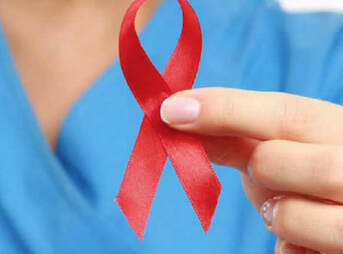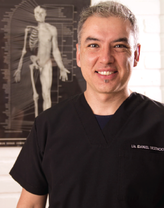LET´S TALK ABOUT HEALTH
With the purpose of celebrating and supporting the efforts to prevent new infections by the Human Immunodeficiency Virus (HIV) and increase the awareness and education over this virus around the world, December 1st is observed as World AIDS (Acquired Immunodeficiency Syndrome) Day since 1988.
The infection caused by the HIV virus is an illness produced by one or two viruses that progressively destroy white blood cells called lymphocytes, causing AIDS and other illnesses derived from a deficient immune system such as infectious diseases and tumors. Symptoms: • Fever • Inflammation of lymph nodes •General discomfort, fatigue of 3 to 14 days Over the years, it is possible that no more symptoms appear. Shortly after being infected the person becomes very contagious as large amounts of the virus circulate in the blood and in bodily fluids. Several months after having contracted the virus, the person may experience mild symptoms in various occasions once again. People who carry the virus may or may not develop symptoms for years; before developing the infections or tumors that define AIDS. There are other symptoms, such as: • Enlarged and painful lymph nodes • Weight loss and fatigue • Intermittent fever • Recurring diarrhea • Anemia and mouth sores Various opportunistic infections and cancers are typical during the beginning of AIDS and its symptoms depend on the organ it affects. For example, if HIV attacks the brain, its symptom is dementia; if it attacks the respiratory system it leads to pneumonia; etc. There are many people who do not show symptoms for more than a decade due to the benefit of current antiviral treatments that can slow down the infection between 10 or 11 years after its detection. Such treatments also reduce the impact of the effects of associated illnesses, defining AIDS as a chronic and treatable disease, but not yet curable. If you have read this far, I want to make it clear that the best way to avoid this disease is prevention! It is in our own hands and our own actions to make healthy decisions. The behavior of each one of us goes hand in hand with the change of sexual or addictive habits, especially for the more vulnerable that could easily be exposed to contracting HIV, the virus that causes AIDS. Strategies to avoid HIV transmission: For the people that are not infected: - Abstinence - Safe sex (using protection) For the people that are HIV Positive: - Abstinence - Safe sex (using protection) - Not donating organs or blood - Avoiding pregnancy - Notifying previous and future partners For the people that consume drugs: - Avoid sharing needles or use them multiple times For medical and dental professionals: - Use latex gloves every time there is contact with body fluids - Use and dispose of needles correctly Whether in the United States, Argentina or the entire world, thousands of people contract the disease every year. We highlight that educating young adults between 13-23 years of age and promoting healthy habits through programs or accessible campaigns within the health and educational system will have the most effect. Young people facing HIV have the lowest chances of staying under medical care or of having a suppressed viral load in comparison with any other age group. Addressing HIV in young people requires that they have access to the information and the necessary tools to reduce their risk of contracting the infection by HIV, as well as obtaining treatment and keeping themselves under medical care in case they do have HIV. Source: - www.cdc.gov Centers for Disease Control and Prevention - Book Manual Merck de Información Médica para el Hogar, Merck Sharp & Dhome. Most used medical reference work in the world. |

